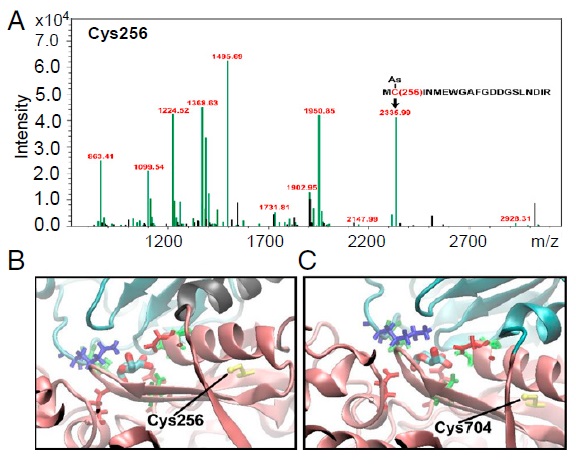Through the HuProt TM human proteome chip (provided by Boao Biotechnology) , the research team of Shanghai Jiaotong University found that arsenic (arsenic trioxide, As 2 O 3 ) can significantly inhibit the glycolytic pathway rate-limiting enzyme hexokinase 2 (HK2) in tumor cells. The activity of hexokinase-20) affects cell metabolism and ultimately leads to apoptosis of tumor cells. The research was published online on November 23rd in the Proceedings of the National Academy of Sciences (PNAS). After several generations of Chinese scientists' efforts, As 2 O 3 has achieved remarkable success in the treatment of APL (acute promyelocytic leukemia), and its drug targets and molecular mechanisms have been elucidated. In addition to APL, a large number of existing studies have shown that As2O3 has great potential in the treatment of many other malignant tumors, but the related mechanisms are unclear. The role of As2O3 in cells may be very extensive, and the use of high-throughput techniques to reveal its mechanism of action from a systemic level is an effective research strategy. Previous studies have used As 2 O 3 to treat cells, and by analyzing changes in the transcriptome and proteome, how As 2 O 3 affects numerous molecular pathways. These studies can give some valuable information, but all the indirect changes observed after As2O3 treatment, still can not tell us the most important information in the role of As 2 O 3 : What are the specific target proteins? Using a proteomic chip containing ~17,000 recombinant human proteins, the authors developed a rapid discovery technique for small molecule-interacting proteins based on proteomic chips. Through a global scan, 360 As 2 O 3 direct acting proteins were discovered. The total number of arsenic direct interacting proteins found by researchers around the world in previous decades of research has not exceeded 20. Further bioinformatics analysis found that As 2 O 3 can affect a series of pathways, the most prominent of which is the glycolysis pathway. Unlike normal cells, even in aerobic conditions, glycolysis is common in tumor cells, a phenomenon known as the Warburg effect. This study shows that As 2 O 3 can directly interact with most proteins in the glycolytic pathway. As 2 O 3 can significantly inhibit the activity of the rate-limiting enzyme hexokinase 2 (HK2) of tumor cell glycolysis in vitro and in vivo, thereby affecting metabolism and ultimately leading to apoptosis of tumor cells. At the same time, the binding sites of HK2 and As 2 O 3 were identified by mass spectrometry. From the perspective of structural biology, the explanation of how As 2 O 3 affects the activity of HK2 through interaction is given. The success of the global discovery of As 2 O 3 direct interaction proteins suggests that the protein chip platform is a powerful tool for rapid and global search for drug targets. Protein chips have good versatility and will be applied to the discovery of direct interaction proteins of a series of important drug molecules, especially drug molecules derived from the treasure house of traditional Chinese medicine, to promote the development of precision medicine. The numerous As 2 O 3 target proteins found in this study will also provide guidance for the subsequent use of As 2 O 3 in the treatment of other tumors other than APL. HuProt TM human proteome chip from Johns Hopkins University, containing ~ 20,000 human full-length recombinant protein, is by far the highest throughput recombinant human protein chip. It has been used in many research fields such as serum marker discovery, protein-protein interaction (PPI), protein-small molecules, protein-RNA/DNA interactions, and post-translational modification. In 2014, Guangzhou Boao Biotechnology Co., Ltd. officially became the agent of CDI human proteome chip in China. Article link: http:// Sweetness Polydextrose,Functional Food Ingredient,Low Sweetness Polydextrose Shandong Bailong Chuangyuan Bio-tech Co.,Ltd. Qingdao Branch , https://www.sdblcycn.com